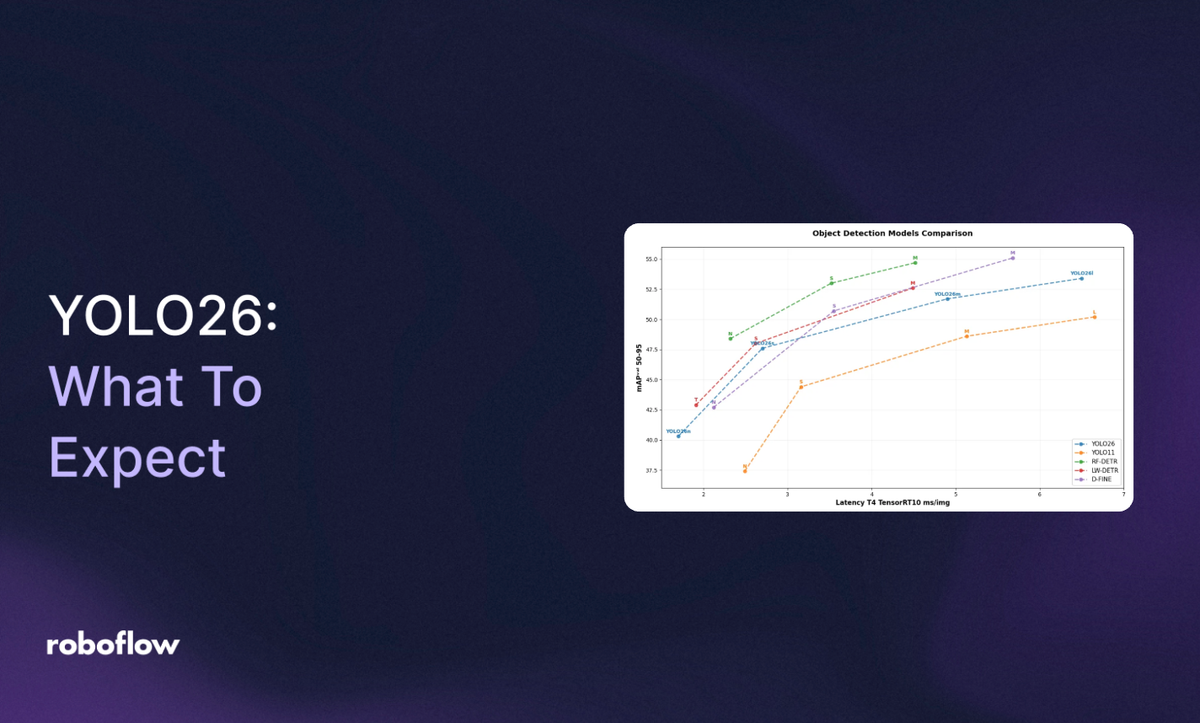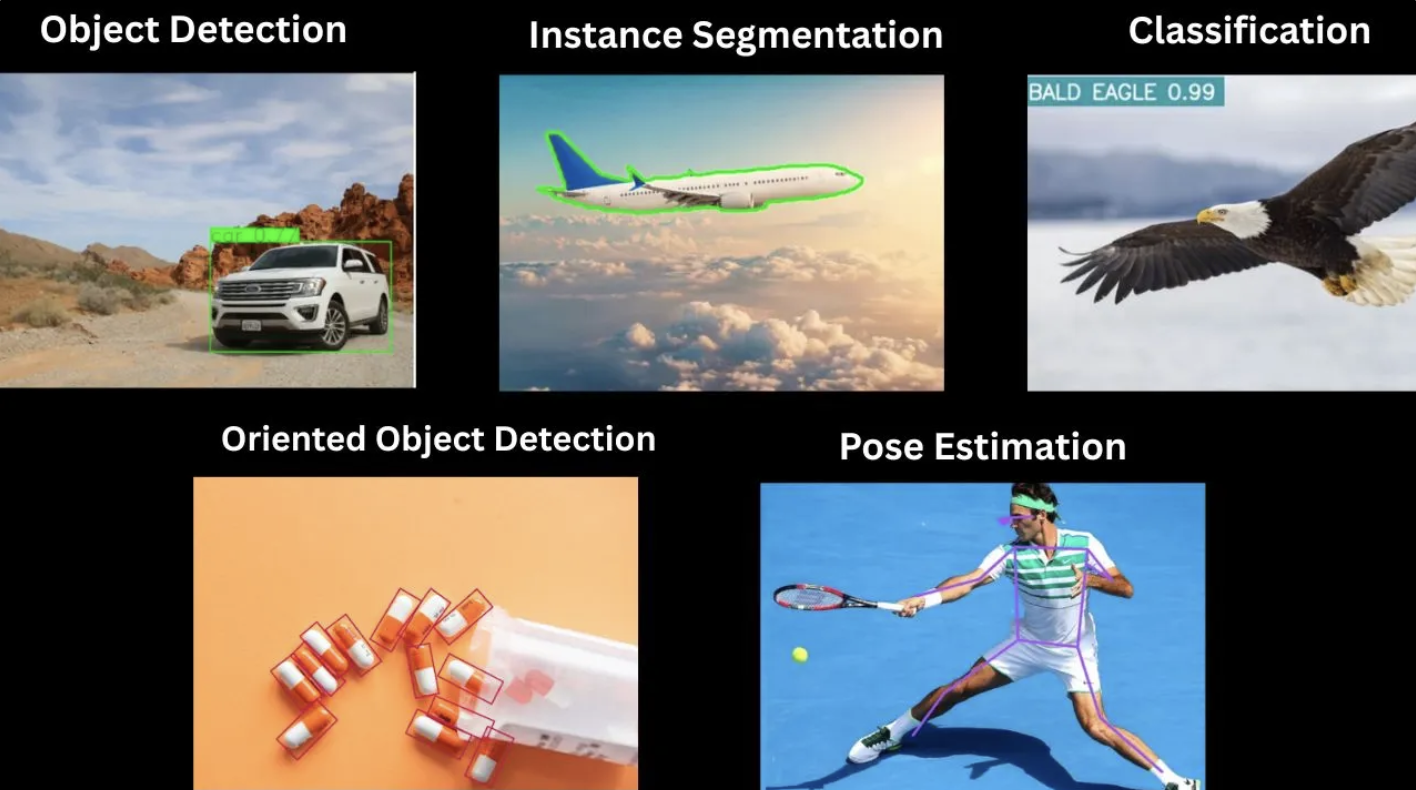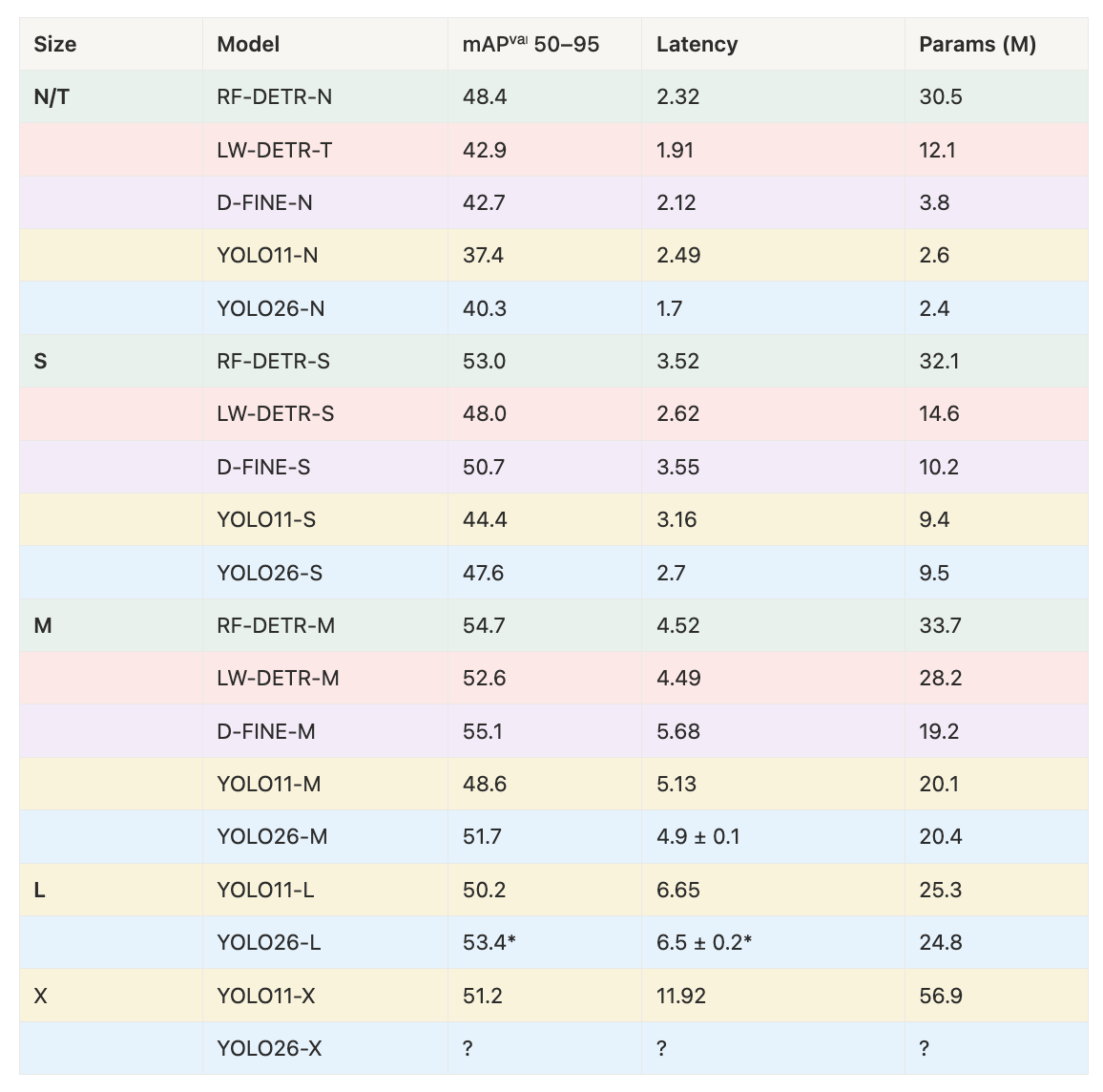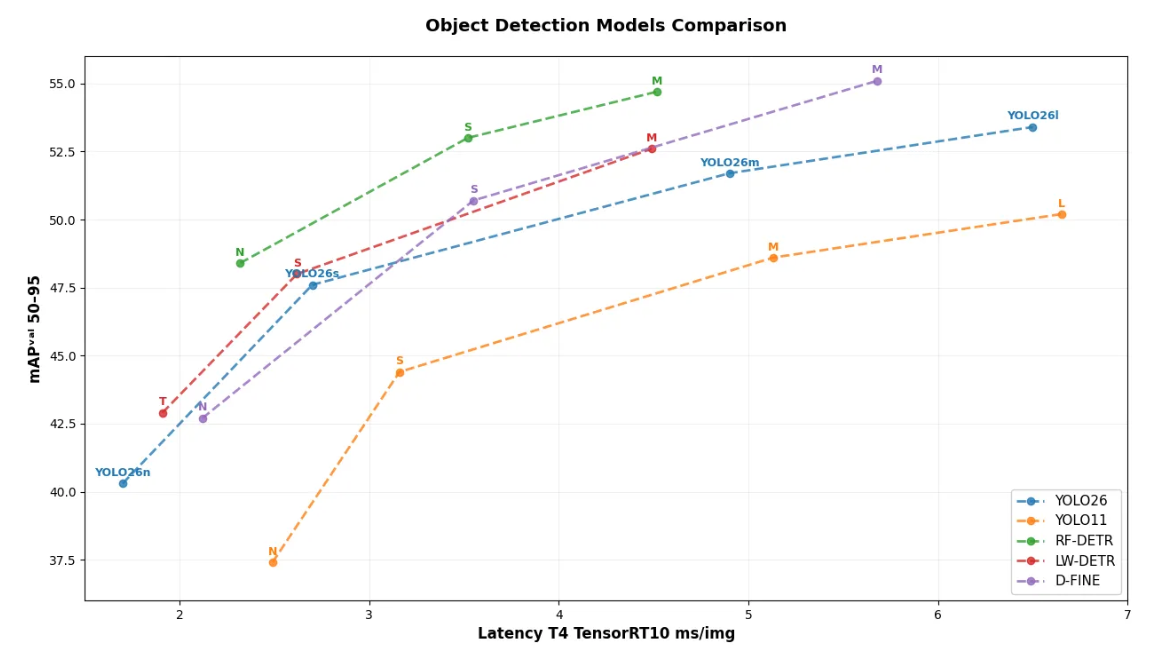
Ultralytics YOLO models are a family of real-time computer vision models designed to handle a wide range of tasks, including object detection, segmentation, pose estimation, classification, and oriented object detection:
Leveraging popular architectures, these models offer exceptional speed and accuracy, making them well-suited for applications across edge devices, cloud APIs, and more.
In this blog, we’ll examine the upcoming YOLO26, set for release in late October 2025, revealing its key improvements, important features, and how it compares to other leading computer vision models.

What Is YOLO26?
YOLO26 is an upcoming multi-task model family designed to handle a broad range of computer vision tasks, including object detection, instance segmentation, image classification, pose estimation, and oriented object detection. The lineup will feature multiple size variants Nano (N), Small (S), Medium (M), Large (L), and Extra Large (X) to cater to different performance and deployment needs.
Compared to previous YOLO generations, YOLO26 is reported to be optimized for edge deployment, featuring faster CPU inference, a more compact model design, and a simplified architecture for improved compatibility across diverse hardware environments.
Key Improvements in YOLO26
YOLO26 introduces several major improvements over previous YOLO families, including:
- Broader Device Support: It removes the Distribution Focal Loss (DFL) module, simplifying inference, enabling multiple export formats (TFLite, CoreML, OpenVINO, TensorRT, and ONNX), and broadening support for edge and low-power devices.
- Enhanced Small-Object Recognition: It utilizes the ProgLoss and STAL loss functions, improving detection accuracy, particularly for small objects, and providing significant advantages for IoT, robotics, and aerial imagery applications.
- End-to-End Predictions: It eliminates Non-Maximum Suppression (NMS) as a post-processing step, producing predictions directly to reduce latency and make deployment in real-world systems faster, lighter, and more reliable.
- Faster CPU Inference: Optimizations in model design and training make YOLO26 faster on CPUs compared to YOLO11. For instance, the YOLO26-N variant delivers up to 43% faster CPU inference than the YOLO11-N, making YOLO26 ideal for real-time performance on devices without a GPU.
- Improved Training: It introduces the MuSGD optimizer, a hybrid of SGD and Muon inspired by Kimi K2 LLM breakthroughs, ensuring stable training and faster convergence by transferring optimization advances from large language models to computer vision.
Popular Families of Computer Vision Models
Besides YOLO26, several other multi-task computer vision models are actively used such as:
RF-DETR
RF-DETR, developed by Roboflow and released in March 2025, is a family of real-time detection models that support segmentation, object detection, and classification tasks. RF-DETR outperforms YOLO11 on RF100-VL benchmarks, demonstrating superior generalization across domains.
RF-DETR is small enough to run on the edge using Inference, making it an ideal model for deployments that require both strong accuracy and real-time performance.
YOLO11
YOLO11, released by Ultralytics in September 2024, is a family of real-time detection models that support multiple vision tasks similar to YOLO26, including object detection, segmentation, classification, pose estimation, and oriented object detection.
It offers higher accuracy than previous generations. For example, YOLO11m achieves higher accuracy while using 22% fewer parameters than YOLOv8m, making it computationally efficient without compromising accuracy.
YOLO11 is versatile across hardware, supporting a range of sizes and optimized for edge devices, cloud environments, and NVIDIA GPUs.
LW-DETR
Light-Weight Detection Transformer (LW-DETR), released in June 2024, is a real-time object detection architecture that combines the strengths of the Vision Transformer (ViT) and the DETR Decoder.
The model divides images into smaller patches using ViT and integrates multi-level feature representations to produce more accurate and robust predictions. Leveraging this design, LW-DETR outperforms YOLO11 in both accuracy and inference speed.
D-FINE
D-FINE, released in October 2024, is a real-time object detection architecture that introduces a Fine-grained Distribution Refinement (FDR) mechanism to iteratively refine bounding box distributions for greater localization precision.
This refinement process enhances the model’s ability to detect small or overlapping objects while preserving the real-time performance critical for navigation and decision-making applications.
Comparison: YOLO26, YOLO11, RF-DETR, LW-DETR, D-FINE
YOLO26 can be compared against these popular object detection models using the following key performance metrics:
- mAPᵛᵃˡ 50–95: Measures object detection accuracy; higher values indicate better detection and localization.
- Latency: The time, in milliseconds, required to process a single image on an NVIDIA T4 GPU using TensorRT v10 optimizations.
- Params: Represents the model’s parameter count (in millions). Higher values may improve accuracy, though not always guaranteed, and can also lead to increased memory usage, computation, and inference time.
The table below provides a detailed comparison of these models and their variants across these metrics:

The plot below visualizes the performance of these object detection models relative to YOLO26 in terms of latency and accuracy:

Overall, the table and plot highlight the strengths and trade-offs of each model:
- YOLO26 delivers high speed and parameter efficiency while maintaining competitive accuracy, making it ideal for real-time and edge deployment.
- RF-DETR prioritizes detection quality, achieving high accuracy across all sizes, but this comes at the cost of larger model sizes.
- D-FINE is lightweight with decent mid-range accuracy, trading slightly higher latency for smaller model size.
Conclusion: YOLO26
When compared to models such as YOLO11, RF-DETR, LW-DETR, and D-FINE, YOLO26 stands out for its efficient use of parameters and fast inference speed. The removal of the Distribution Focal Loss (DFL) module further enhances compatibility with a wide range of edge and low-power devices.
These enhancements make YOLO26 ideal for edge computing, robotics, IoT applications, and other scenarios with limited computational resources.
Learn more about YOLO.
Written by Dikshant Shah
Cite this Post
Use the following entry to cite this post in your research:
Contributing Writer. (Oct 20, 2025). YOLO26 Release Preview: What to Expect. Roboflow Blog: https://blog.roboflow.com/yolo26/
